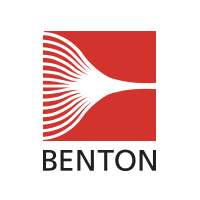
Addressing the Gap in Federal Program Enrollment: An Analysis of Lifeline and Affordable Connectivity
Despite eligibility for income-based federal assistance programs, many households choose not to enroll in these benefits. Current participation rates highlight a concerning trend: only 20% of eligible households utilize the Lifeline program, which offers subsidized phone and internet services, and fewer than 20% engage with the Low Income Home Energy Assistance Program (LIHEAP). In contrast, the Affordable Connectivity Program (ACP), designed to provide internet access to low-income households, has seen enrollment rates soar to approximately 43%, significantly higher than its counterparts.
This disparity in participation rates was the focal point of a recent panel discussion hosted by Georgetown University on Capitol Hill, where a group of economists and public policy experts convened to analyze the implications of program design on household participation. The panelists emphasized that thoughtful design choices are crucial in fostering greater utilization of federal subsidies among eligible populations.
Several factors contribute to the varying enrollment levels across these programs. For instance, the ACP boasts a streamlined application process, which includes a straightforward online form and automatic eligibility criteria linked to existing benefits such as Medicaid or SNAP. In contrast, the Lifeline and LIHEAP programs often involve more complex requirements, leading to confusion and discouragement among potential beneficiaries. The ACP’s marketing efforts also play a significant role; increased visibility and outreach can make a profound difference in awareness and understanding.
Moreover, the panelists examined the psychological and social barriers that may inhibit eligible households from accessing these benefits. Stigma associated with receiving government assistance, a lack of trust in governmental institutions, and a general feeling of overwhelm with navigating bureaucratic systems can further diminish enrollment rates.
As policymakers look to improve participation in various federal assistance programs, insights gleaned from successful initiatives like the Affordable Connectivity Program may guide future strategies. Enhancements in communication, application processes, and overall program structure are imperative to increase the uptake of essential services among eligible households.
These discussions underscore the need for continuous evaluation and reform of federal assistance programs to ensure that the benefits reach those who need them most, ultimately contributing to a more inclusive economy and society. Addressing the barriers to enrollment is not just a matter of policy efficiency; it is a crucial step toward social equity and the well-being of all citizens.


